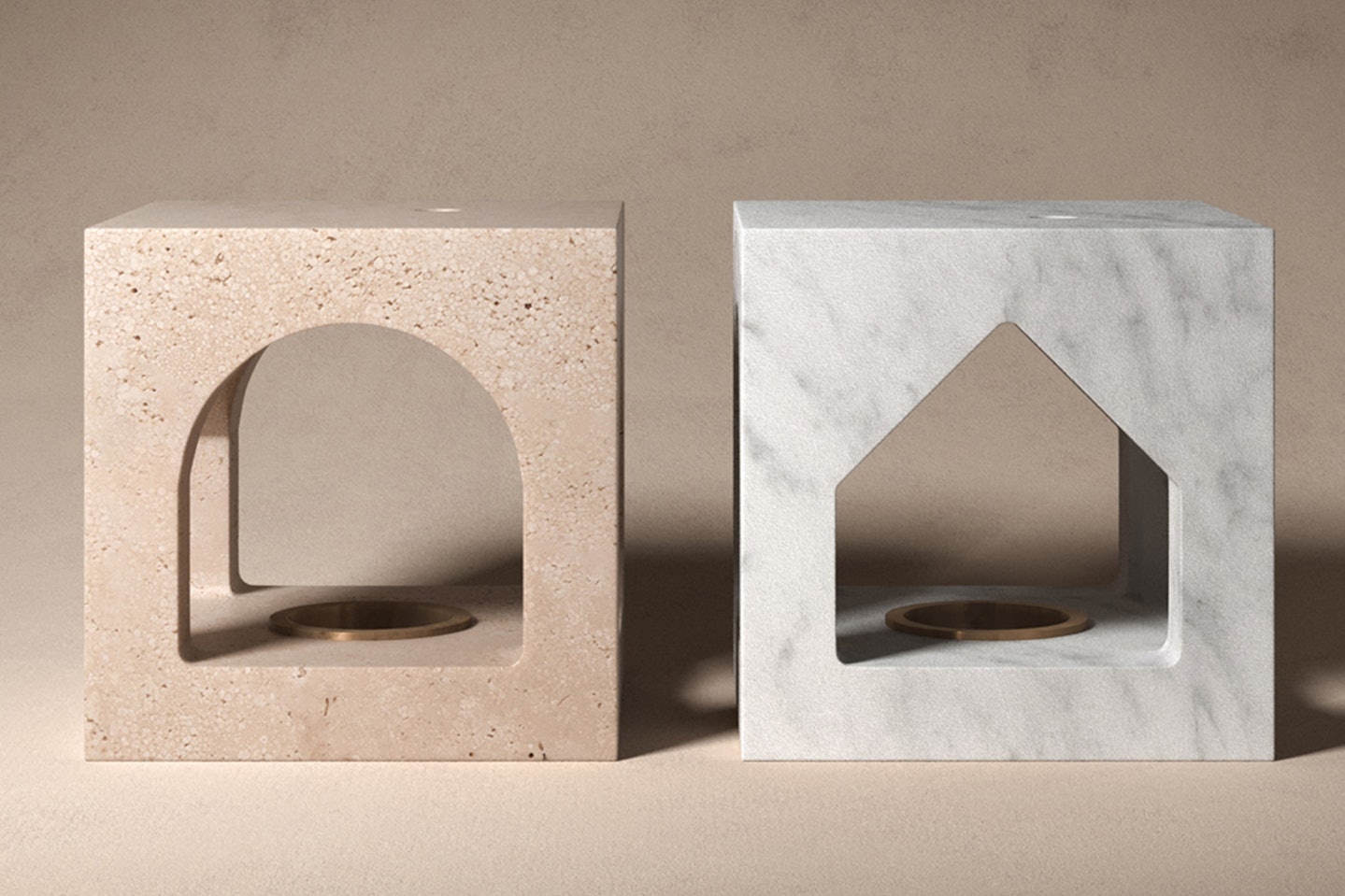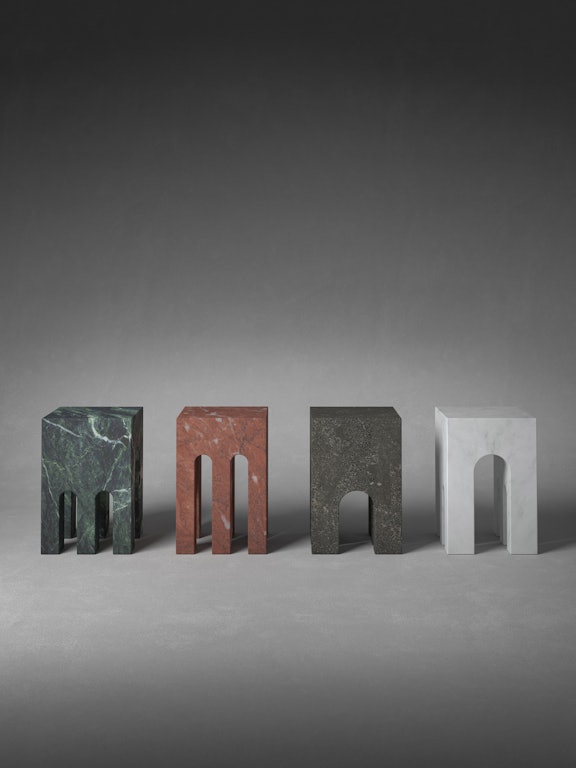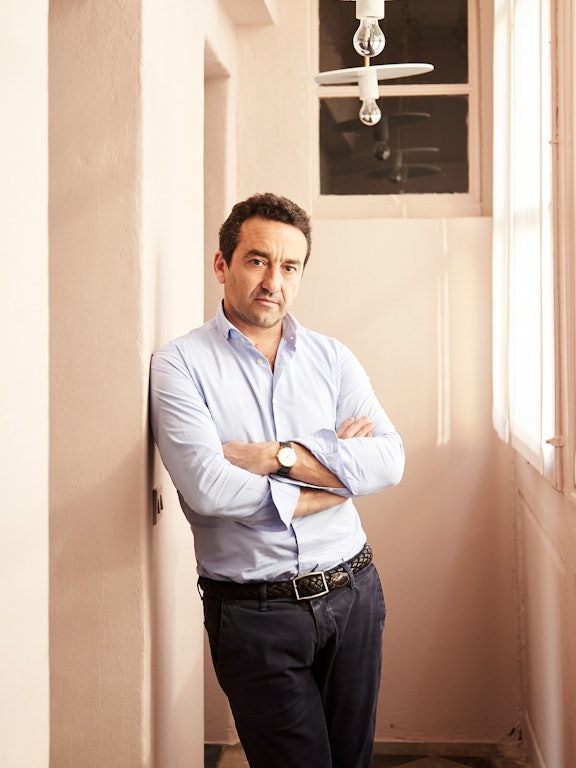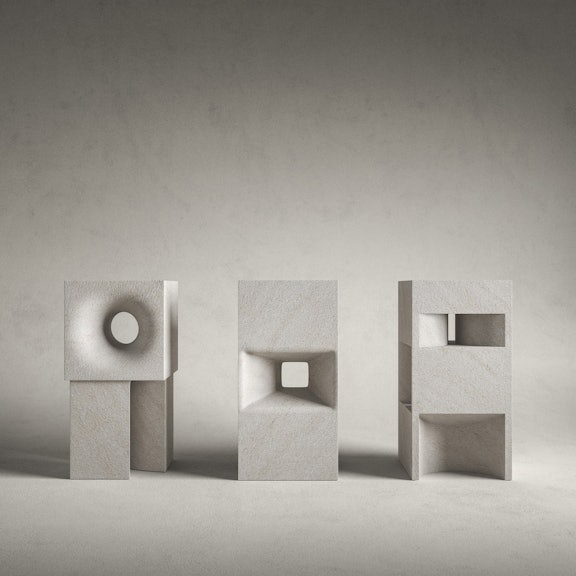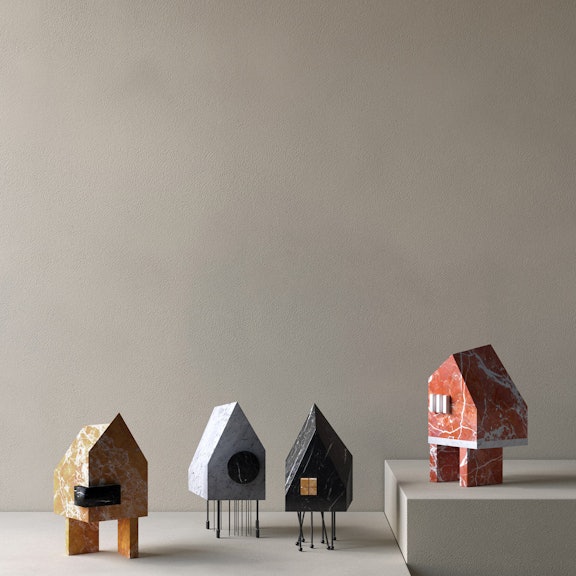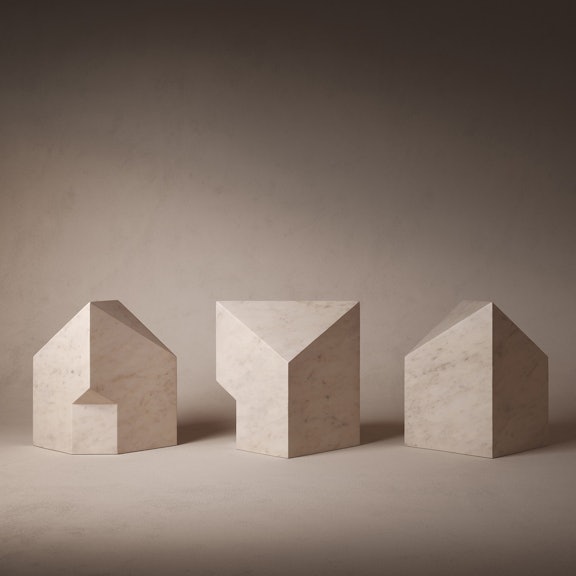The Village Collection by Salvatori: An interview with Kengo Kuma
03.2022
Discover Kengo Kuma’s thoughts on The Village, an exploration of the concept of home, expressed through miniature sculptures
We talk with Kengo Kuma about The Village
At Salvatori, we have long thought of design as a means to communicate sensations and emotions. It is this philosophy that guides the way we work, taking inspiration from the world around us, whilst at the same time striving to create products and designs that are in harmony with that very world.
It is no secret that the past year was a particularly challenging one, prompting extraordinary changes not only in our lifestyles, but also the way we interact with others. The frenetic rhythms that marked our pace of life pre-2020 slowed right down, and we found ourselves with time to create new rituals, with our home at the centre of them all.
No matter where we were in the world, we were all in the same boat, and it dawned on us that we are all part of a vast global community.
With this in mind, we wanted to create a collection that captured this extraordinary sense of community and solidarity, a type of homage to this unprecedented moment in our collective history. And thus, The Village was created.
To remain faithful to our concept of replicating the global nature of the phenomenon, we invited architects and designers from around the world to create a collection of miniature houses that would express the multicultural makeup that is intrinsic to our planet.
Among the artists who took part was Kengo Kuma, a long-time friend and collaborative partner. In fact, we can go back to 2009 when our CEO, Gabriele Salvatori, met with him in his Tokyo studio. Gabriele landed at Narita Airport in the early evening, only to discover that the appointment he thought was scheduled for the following morning was, in fact, for 11.30 that night. Managing to get to the Kengo Kuma & Associates office with 10 minutes to spare, he was taken aback to find it humming with staff, tirelessly working on all manner of projects.
Gabriele still remembers that meeting and how it crystallised for him Kengo Kuma’s supreme commitment to design, and how that also resonated with his own philosophy. It was, as they say, the start of a beautiful friendship, forged on shared values and a deep love of natural stone.
We asked the great designer for his thoughts on the The Village, as well as wider aspects of design in general.
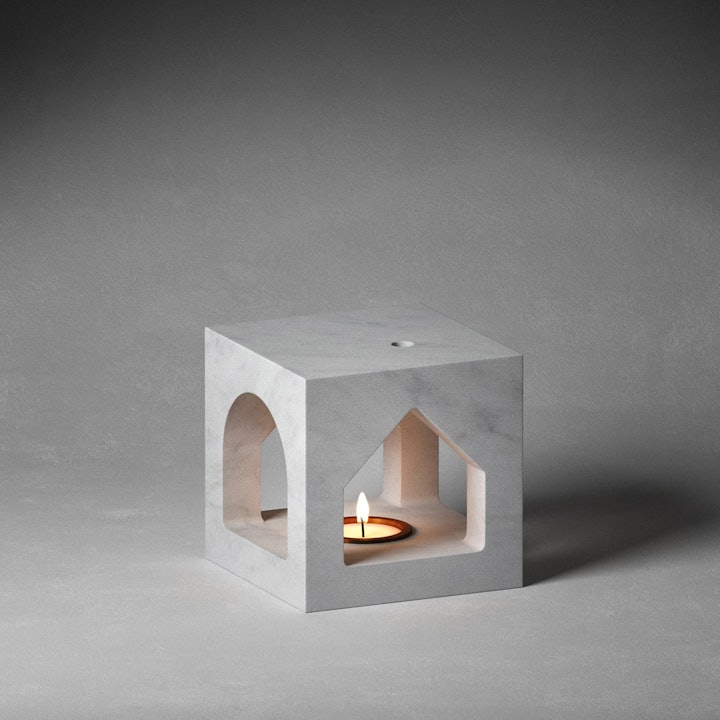
How do you see design within the context of natural stone?
Working with stone always comes with gratitude. Modern artificial materials are only at their best at the moment they are put in place and from that moment they experience decay. Stone increases in beauty with time… maybe because it’s a material that nature has been crafting eternally.
Speaking about The Village, in your view, how is design linked to our special places, those places we hold dear to our hearts?
Every experience shapes the way we see the world and our memories. What we have done and accomplished, the food we have been fed, the things we have been told, the places we have been … and architecture consists of creating places.

What principles guided you in designing your sculptures for The Village?
Our design for The Village wanted to avoid being about simply conceiving a “house shape” of a certain interest or attractiveness that could be done with any material. It was more appealing to us to think about how to do this with stone and carving was the natural process we ended up with. The shape was the least important aspect and therefore we just took simple childish-like silhouettes that universally recall the image of a house.
How important is functionality in design for you?
It’s important for clients and therefore it is important for our design. But there are many other things that are important as well.
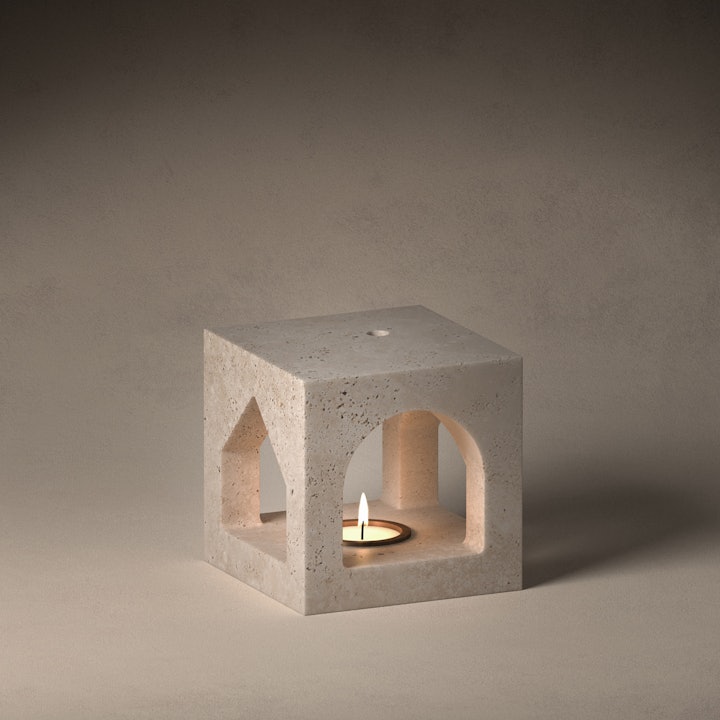
How do you see the role and contribution of sustainability in the future of design?
Sustainability has become one of the key problems that design in general has to deal with. But problems always make design richer and move forward.
How did you find the experience of working with Salvatori?
Kengo Kuma & Associates has collaborated several times with Salvatori, but this is the smallest and most abstract project so far. Our approach and proposal, despite being a totally different solution to what was expected, was well received and the Salvatori team immediately expressed great enthusiasm. We are at a point where all the details have been defined and we are waiting to see the first prototypes, always one of the most exciting moments of a project. We are looking forward to seeing how all these ideas look like.
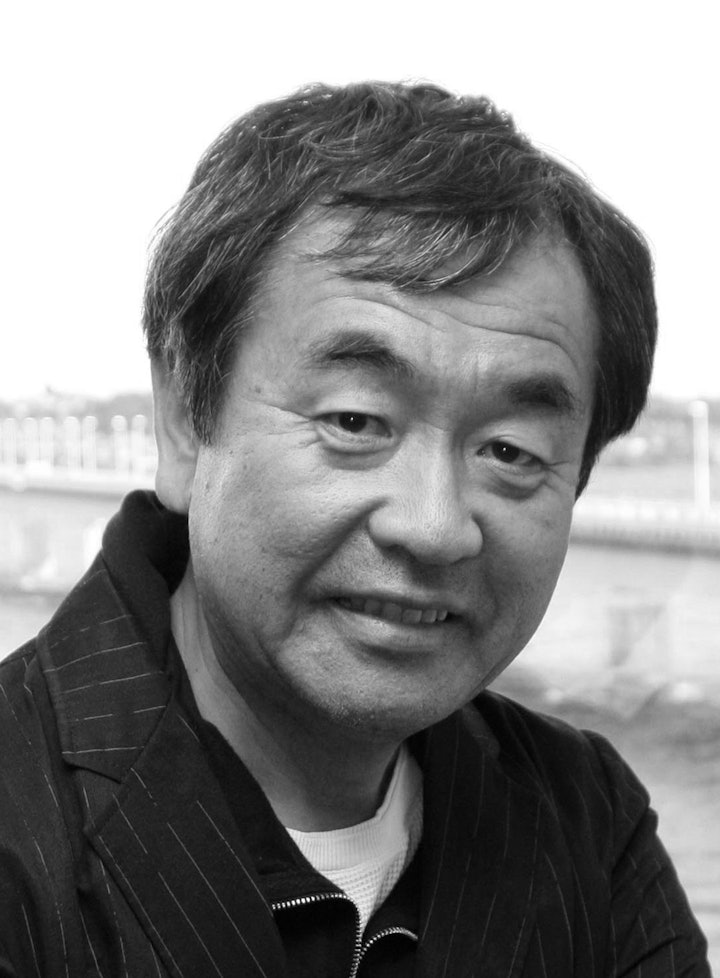
What name did you give to your contribution and why?
MA House. The Japanese “kanji” sign 間, usually read as MA, contains a very wide range of meanings around the concept of in between in reference to both space and time. It can be used to refer to the absence between existing elements to talk about distance, void, time span, or to recognise that gap as an existence in itself to form terms such as relationship, interval, pause.
Our design relies on the idea of carving the stone, creating a void to represent the common profile of a tilted roof house that, as a “kanji”, universally recalls the image of a home. This means considering the void, the absence of the stone, the space among the remaining material, as the element to be present and perceived. Because of this, we considered the Japanese term MA to closely represent both the concept of our design as well as the crafting process to produce it.
What stones did you use for your pieces and why?
Since our concept takes the absence of stone as the starting point, we chose Bianco Carrara and Light Travertine because their tones are neutral and their patterns very subtle. This is to emphasise perceiving the void itself and feeling its presence.
Stone is a natural material that is procured by extraction, carving it out of the ground. Its expression appears both in its matter or in its absence, as a void within itself.
The Village is another example of the original way we live through design, with an innovative approach that puts the individual at the very heart of all we create. It set out to demonstrate how even the smallest accessory or décor element can exude creativity and express a meaningful message with elegance, as long as there is dedication and commitment behind its design.
